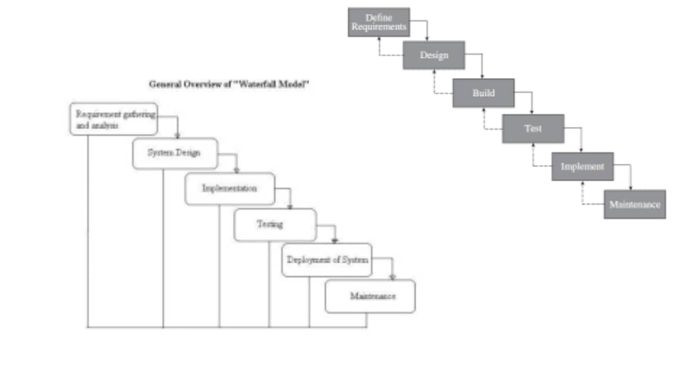The Waterfall Model is a traditional software development process used in Software Engineering. It is a linear and sequential approach where each phase of the software development lifecycle (SDLC) must be completed before moving on to the next one.
Phases:
1. Requirements Gathering: All system requirements are collected and documented.
2. System Design: The system architecture is designed based on the requirements.
3. Implementation: The system is developed or coded.
4. Testing: The software is tested for bugs and issues.
5. Deployment: The software is deployed to production.
6. Maintenance: Ongoing updates and bug fixes are made.
Features:
– Structured Approach: Each phase has specific deliverables.
– Predictability: It’s easier to estimate time and cost at the beginning.
– Documentation: Comprehensive documentation is produced at each stage.
Disadvantages:
– Inflexible to changes after the design phase and is not ideal for projects where requirements may evolve.
The Waterfall model is best suited for smaller projects with clear, fixed requirements.


